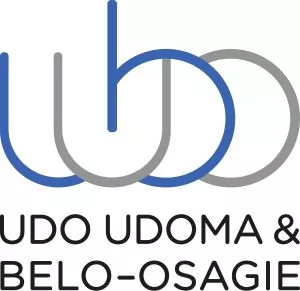Introduction
It was long anticipated, and it eventually happened on 28th March, 2024. So, it was not a surprise for many watchers of the Nigerian banking sector, what was a surprise, however, was the nature of the new requirement that excluded a large portion of a bank's shareholders' funds. On that eventful day of 28th March, 2024 – the night before Good Friday 2024, the Central Bank of Nigeria (CBN) issued a circular titled "Review of Minimum Capital Requirements for Commercial, Merchant and Non-interest Banks in Nigeria" (Circular) for an upward review of the minimum capital for all Nigerian banks. The CBN mandated all banks and promoters of proposed banks to increase their minimum capital base. The CBN stated that the upward review is to further strengthen the banks against external and domestic shocks, enhance the stability of the financial system and to ensure that banks have a robust capital base to absorb unexpected losses and capacity to contribute to the growth and development of the Nigerian economy. The review, according to the CBN, is to engender the emergence of stronger, healthier and more resilient banks to support the achievement of a US$1 trillion economy by 2030 as bigger banks with larger capital base and capacity can underwrite larger levels of credit which is critical for the growth of the economy.
Legal Basis
The CBN acted pursuant to section 9 of the Banks and Other Financial Institutions Act 2020. The section empowers the CBN to determine the minimum paid-up share capital requirements of all categories of Nigerian banks licensed by it which shall be complied with by all the banks within the timeline prescribed by the CBN. Failure to comply with the minimum capital requirement is a ground for the revocation of any licence of any bank by the CBN.
New Minimum Capital Requirements
Prior to 28th March, 2024, the minimum capital requirements for banks range from NGN5 billion to NGN50 billion, depending on the type of licence that a bank holds. The existing capital, and new capital requirements as set out in the Circular, are as follows:
| Type of bank | Existing Capital | New capital |
|---|---|---|
| Banks with international authorisation | NGN50 Billion | NGN500 Billion |
| Banks with national authorisation | NGN25 Billion | NGN200 Billion |
| Banks with regional authorisation | NGN10 Billion | NGN50 Billion |
| Merchant banks | NGN15 Billion | NGN50 Billion |
| Non-interest banks with national authorisation | NGN10 Billion | NGN20 Billion |
| Non-interest banks with regional authorisation | NGN5 Billion | NGN10 Billion |
Timeline for Compliance
Banks are required to comply with the new requirement within a p[eriod of two years from 1st April, 2024 to 31st March, 2026. Ahead of compliance, the CBN requires ach bank to submit its implementation plan (clearly indicating the chosen options and all the activities involved in the timeline) to meeting the capital requirements. Promoters of new banks with applications already with the CBN are to meet the new requirements by to 31st March, 2026 while the new capital requirements shall apply to all new applications for banking licences submitted from 1st April, 2024.
Composition of the New Capital Requirements
The new capital is limited to only share capital and share premium. Retained earnings and other reserve components of shareholders' funds are excluded from the new capital. In addition, Additional Tier-1 capital (AT-1 Capital) will not qualify for the new capital requirement. The CBN also excluded capital from the issuance of bonus shares. This means that banks will not be allowed to capitalise retained earnings through the issuance of bonus shares to meet the new capital requirement. For proposed banks, the capital will be based on only paid-up capital. Retained earnings, AT-1 Capital and other reserves will continue to be recognised in the computation and determination of a bank's capital adequacy ratio (CAR).
Options for Existing Banks
To meet the new minimum capital requirements, the CBN requires banks to consider: (i) the injection of fresh equity capital (through private placements, rights issues and/or offers for subscription); (ii) mergers and acquisitions; and/or (iii) upgrade or downgrade of current licence authorisation. The corporate nature of a bank (whether a private limited company (LTD) or a public limited company (PLC)) and the nature of shareholding (whether as a standalone bank or a bank owned by a CBN-regulated holding company (Holdco)) will determine factors that a bank will need to consider in the adoption of any or some of the available options. In this regard, we have highlighted some specific legal solutions for banks which will depend on the existing structure of the business, regulatory requirements, etc. Some of the various legal strategies that banks can adopt to meet the new capital requirement include:
- Rights issue: This requires a bank (or its holding company (Holdco), as the case may be) to raise additional new capital by offering shares to existing shareholders on a pro-rata basis. This method can be used by a bank or Holdco that is either LTD or a PLC. It would help to inject much-needed capital into the bank (or the Holdco for investment in the bank) and give fair treatment to all existing shareholders as it could prevent dilution risk. The regulatory processes/approvals will involve the CBN and the Corporate Affairs Commission (CAC) (and the Securities and Exchange Commission (SEC), Central Securities Clearing System (CSCS) and The Nigeria Exchange Limited (NGX) if the bank or Holdco is a PLC).
- Public offer (offer for subscription): A bank (or bank Holdco) that is currently PLC can issue new shares through a public offer. It will help raise additional fresh capital, provide an opportunity for existing members and the general public to acquire shares, enable the bank or Holdco to diversify its investor base, could attract international investors etc. If the public offer is by a Holdco, the Holdco will use the proceeds from the offer to acquire more shares in the banking subsidiary to meet the new capital requirement. The shares will be registered with the SEC. The regulatory processes/approvals will involve the CBN, SEC, CAC, NGX and CSCS.
- Private placement ("PP"): A bank (or Holdco) that is currently LTD or a PLC can issue new shares to selected investors on a PP basis. It will be necessary to get select investors that will ensure that the bank's (or Holdco's), if LTD, shareholders do not exceed 50 members – excluding employees that may also be shareholders. If the bank of Holdco is a PLC, that restriction will not be a material issue but the bank or Holdco will need to comply with the SEC's requirements for a PLC to issue shares by way of PP including showing that it is in dire need of funds and the shares will be registered with the SEC. It will help raise additional capital and provide an opportunity for selected investors to become shareholders of the bank/Holdco and, therefore, empower the bank to diversify its investor base, help attract international investors who are wiling to negotiate their price entry point, etc. The regulatory processes/approvals will involve the CBN and CAC (and the SEC, CSCS and NGX if the bank or Holdco is a PLC).
- Initial public offer ("IPO"): A bank or Holdco that is currently LTD could convert and reregister as a PLC, issue new shares to the general public, and list the shares on the NGX through an IPO. An IPO can be a potential strategic move that can unlock some benefits beyond the injection of additional capital. It will help raise additional capital, provide an opportunity for the general public to become shareholders of the bank/Holdco and enable the bank/Holdco to diversify its investor base including potentially attracting international investors, etc. Funds raised by the Holdco will be used to capitalise the bank subsidiary. The regulatory processes/approvals will involve the CBN, SEC, CAC, NGX and CSCS.
- Merger: Another option for existing banks is to consider merging with another bank into a single larger entity for the consolidation of all their assets and liabilities, operations, etc. By combining complementary strengths, resources and customer bases, the merged entity can have a stronger competitive position in the market. A merger would serve as a catalyst for consolidation, streamlining operations, and optimising costs which would enhance competitiveness in a highly uncertain market. There may be tax issues with the merger if the 365-day rule to have tax benefits (such as the exemption of assets transferred from capital gains tax and value added tax and the utilisation of deferred tax assets (losses, allowances etc)) is not met. The regulatory processes/approvals will involve the CBN, CAC, the Federal High Court (FHC) and the Federal Inland Revenue Service (FIRS) (and the SEC, NGX, and CSCS if one of the merging entities is a PLC).
- Acquisition: An existing bank could consider acquiring another bank with a view to subsequently merge the two banks into a single larger entity for the consolidation of all their assets, liabilities, operations, etc. A Holdco could adopt the same strategy by acquiring another bank and, thereafter, merging the acquired bank with its existing bank. An acquisition and a subsequent merger serve as a catalyst for consolidation, streamlining operations, and optimising costs which would enhance competitiveness in a highly uncertain market. Similarly, the regulatory processes/approvals will involve the CBN and CAC (and the SEC, CSCS, and NGX if one of the entities is a PLC, and the FHC and FIRS for the subsequent merger).
- Capitalisation of dividends: The CBN does not permit banks to capitalise retained earnings by issuing bonus shares. In that case, a bank/Holdco could declare dividends to its shareholders and have the shareholders utilise the dividends to pay for new shares in the bank. This will enable a bank/Holdco to raise capital to meet the new capital base. Allowing any willing existing shareholders to elect to use their dividends to pay for new shares will not be inconsistent with the CBN requirements. Any unwilling shareholder will receive its dividend in cash. This method can be used by a bank of Holdco that is either LTD or a PLC. The regulatory processes/approvals will involve the CBN and the CAC (and the SEC, CSCS and NGX if the bank or Holdco is a PLC).
- Convertible debt instruments: A bank/Holco could issue a convertible debt instrument to investors in the interim. The instrument will have trigger provisions for mandatory conversion into equity in the bank/Holdco before the capitalisation deadline. This will enable the bank/Holdco to raise additional new capital. This method can be used by a bank or Holdco that is either LTD or a PLC to inject much-needed capital into the bank (or the Holdco for investment in the bank). The regulatory processes/approvals will involve the CBN and the CAC (and the SEC, CSCS and NGX if the bank or Holdco is a PLC). Other than the CBN, these processes will apply at the point of conversion. The SEC also has requirements regarding convertible instruments issued by PLCs that will need to be considered by a PLC issuer.
Points for Bank Holding Companies
The capitalisation option(s) to adopt will depend on the peculiar status of each bank and its Holdco. A bank that operates under a Holdco structure will need to receive any capital injections at the Holdco level while the Holdco will invest the funds directly in the bank. It will be beneficial to invest at the Holdco level to enable the Holdco to meet its capital requirements and avoid a situation of dilution. This is because directly raising the capital at the bank level will have various implications such as (i) affecting Holdco's ability to meet its capital requirements; (ii) dilution of Holdco's interest in the bank; (iii) Holdco could become a minority shareholder; (iv) conversion of the bank into a PLC if more than 50 members, etc.
The Holdco must at all time be in a position to comply with the CBN prescribed minimum capital base which is a minimum paid-up capital that shall exceed the sum of the minimum paid-up capital of all its subsidiaries. It will be easier to raise funds at the Holdco level, particularly for listed Holdcos, which will be utilised by the Holdcos to invest in the banks. An unlisted Holdco may consider converting into PLC if the potential members to raise the required capital to capitalise the subsidiary bank will be more than 50 members. The nature of each bank and its position will need to be evaluated to ascertain the most appropriate capitalisation structure. For Holdcos, the regulatory processes/approvals will involve the CBN, SEC, CAC, NGX and CSCS as may be applicable.
Compliance with CAR by Banks
Notwithstanding the capital increase, the CBN requires EACH OF THE banks to continue to ensure compliance with the minimum CAR applicable to its licence authorisation. The CBN stated that a bank that breaches the CAR will be required to inject new capital to comply with the minimum CAR. This means that banks must still take steps to comply with the relevant minimum CAR notwithstanding that it is seeking to raise the new capital. Banks with lower CAR, simultaneously with taking steps to comply with the capital increase, could take steps to issue other instruments to raise capital for their CAR. Such other instruments include AT-1 Capital, subordinated debt instruments for Tier 2 capital, etc. The adoption of any of these instruments will enable a bank to raise fresh capital to comply with its minimum CAR.
- Hybrid capital instruments: As the name suggests, these are financial instruments that combine features of traditional debt securities (like bonds) and equity instruments (like shares) to create a unique financial product that serves specific purposes for both issuers and investors. Although banks are not permitted to use debt instruments to meet CAR, they are allowed by the CBN to utilise hybrid capital instruments such as AT-1 Capital subject to certain conditions. Some of the usual conditions include the instruments must be unsecured, subordinated and fully paid-up, not redeemable without the prior consent of the CBN, available to participate in losses, the maturity period of at least 10 years, etc. Depending on the type of instruments, the regulatory processes/approvals may involve the CBN, SEC, CAC, etc. as may be applicable.
- Subordinated debt instruments: Banks are permitted by the CBN to utilise subordinated debt instruments as Tier 2 Capital to meet CAR subject to certain conditions being met. Some of the conditions include minimum original maturity of at least 5 years, the debt instrument must be subordinated to depositors and general creditors of the bank, no rights of acceleration of future payments, debt must be unsecured, CBN's prior approval for prepayment, etc. The subordinated debt will be unsecured and, therefore, may not be too expensive to implement. Subordinated debt could be raised through the issuance of Eurobonds or by borrowing a compliant loan from lenders. Depending on the nature of the instruments, the regulatory processes/approvals will involve the CBN and the SEC as applicable.
Conclusion
The legal solutions outlined above are proactive strategies that banks/Holdcos could consider implementing to strengthen their financial position, meet the new capital requirements and comply with the CAR in the face of economic challenges. Banks/Holdcos can also implement practical solutions to ensure that they meet the timeline set by the CBN. The institutions will need to take steps to proactively navigate legal challenges and capitalise on available opportunities.
Lastly, whether the announcement that was made on the night before Good Friday will bring good tidings to the Nigerian banking sector, to bankers and to the investing community, time, as with all things, will tell!
We are available to provide clarification on the issues discussed in this article and on other related matters. For further enquiries, please contact us at FinancePartners@uubo.org
The content of this article is intended to provide a general guide to the subject matter. Specialist advice should be sought about your specific circumstances.





